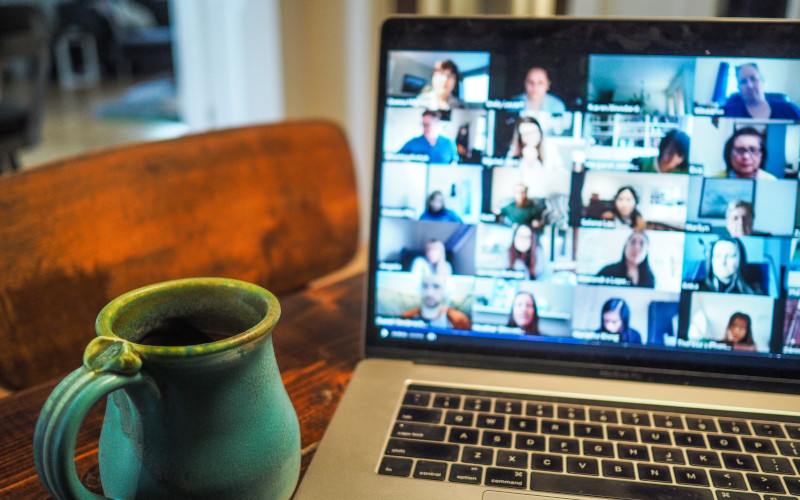How "Zoom Fatigue" Impacts Your Staff and Donors
Samantha Hunter
Published: 05/11/2021
 Photo by Chris Montgomery on Unsplash
Photo by Chris Montgomery on Unsplash
“Zoom fatigue” is a phrase that you’ve probably heard, and maybe felt yourself over the past year. It’s described by Psychology Today, as the tiredness, worry, or burnout associated with overusing virtual platforms of communication. This is a new problem for mental health that’s directly tied to the “new normal” we’re all experiencing.
Why it’s exhausting
There’s no doubt that remote work and virtual event options have their benefits. No commuting time, flexibility to do household tasks throughout the day, and easy access to attend more fundraising events than ever before to name a few. But sitting on video calls day-in and day-out is exhausting. Especially when they account for an entire work day and are becoming increasingly common for social events outside of the workday.
The numbers alone speak for themselves. The use of Zoom went from about 10 million daily Zoom meetings in December of 2019 to 300 million in April of 2020. And that doesn’t account for other video platforms like Microsoft Teams, FaceTime, or Skype. There have been a number of psychological studies conducted over the past year that explain what causes Zoom fatigue and why you should reconsider how often you use video meetings.
You want your staff, donors, and grateful patients to be highly invested in your cause but when people are spending more of their days staring at a screen than not, it won’t matter how passionate they are about your cause.
Below are some of the most common reasons for Zoom fatigue and what you can do to help donors and staff reduce the impact:
There’s a lack of non-verbal cues
A lot of our communication is actually unconscious and nonverbal. How we perceive people or a conversation, often comes from things like eye contact and body posture. We use these nonverbal cues to not only learn about others, but it also helps us prepare a response to what they are communicating to us.
On video these cues can be really difficult to pick up since you are generally only seeing a person’s face. You can’t really make eye contact with someone on a video call because of the way the cameras are set-up. On top of that, there’s often a small but noticeable lag in speech and subtle facial expressions. Without these cues it makes it really hard to fully “read the room.”
Whether it’s a staff meeting or a conversation with a donor, try to think about if a video call makes sense. There’s a right time and a right place for a phone call, email, or even snail mail instead of only relying on video calls. Check out this post on how to write better emails and why you should be revisiting some of the basics when it comes to fundraising.
It’s hard to stay engaged, even if you want to
Have you ever felt this in a meeting or webinar? You’re really interested in a topic or are really trying to stay engaged but for some reason you just can’t? You aren’t the only one. This has been attributed to something called “hypergaze,” or an intense feeling that the other people on the call are staring at you because the video conferencing display shows everyone looking toward their cameras no matter who their focus is actually on. Feeling like everyone is looking at you makes you feel like you need to appear very engaged, which in and of itself is exhausting and can be distracting.
It could be beneficial to rethink how you run some of your meetings and touch bases with donors. Could you pre-record your organizational status updates instead of pressuring people to sit through a Zoom call at a specific time? According to GoToWebinar, 84% of consumers opt for recorded webinars to live events. Let your audience decide the best viewing time for them and then they are more likely to remain engaged and retain the information you want to share.
Mirror anxiety is real
Most video platforms include a live image of yourself during meetings and it can be hard to look away from it. In a normal face-to-face meeting you can’t typically see your own reactions to someone else. Seeing yourself in real-time is fatiguing and has been linked to increased depression, especially among women.
There’s an easy fix for this. A lot of video platforms allow you to hide your self-view but some people don’t realize that’s an option. As you’re rethinking your overall Zoom strategy, it would be nice to send out a “Zoom tips and tricks” reminder to staff in case they aren’t aware that’s an option.
When stay-at-home orders went into full effect around the world, we naturally leaned into technology to help us adjust to the lack of facetime and social interaction we were all experiencing. But you can’t just use Zoom as a direct replacement for in-person staff meetings or fundraising events. It’s important to shift your thinking and ask yourself if a Zoom call is really necessary.
For more on this topic, check out
this post on how Inova Health Foundation adapted its gala to a virtual event and avoided just another Zoom call.